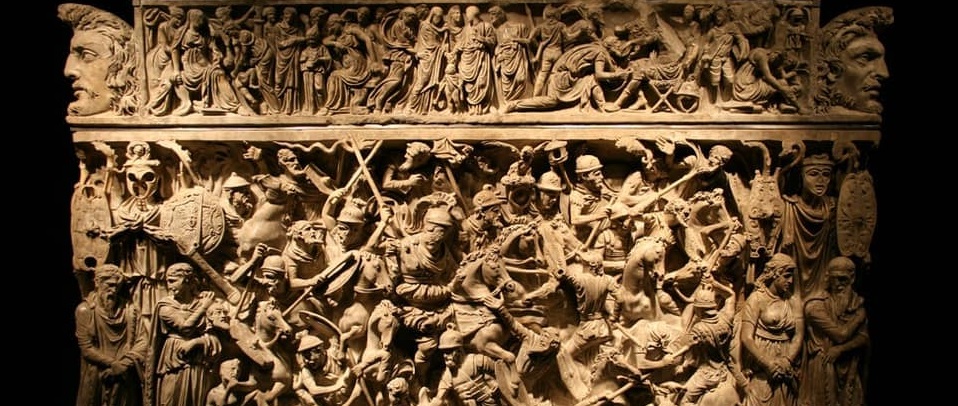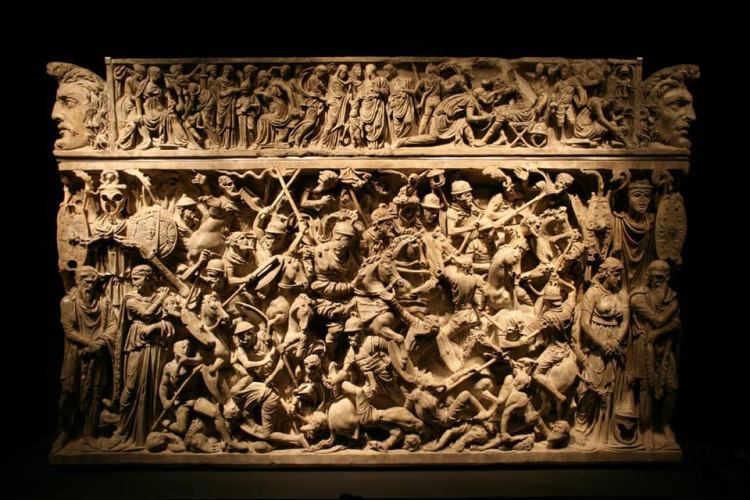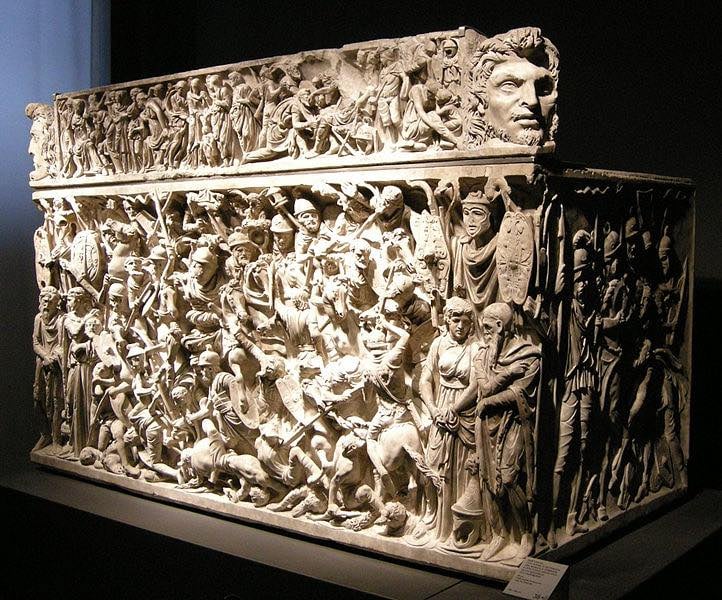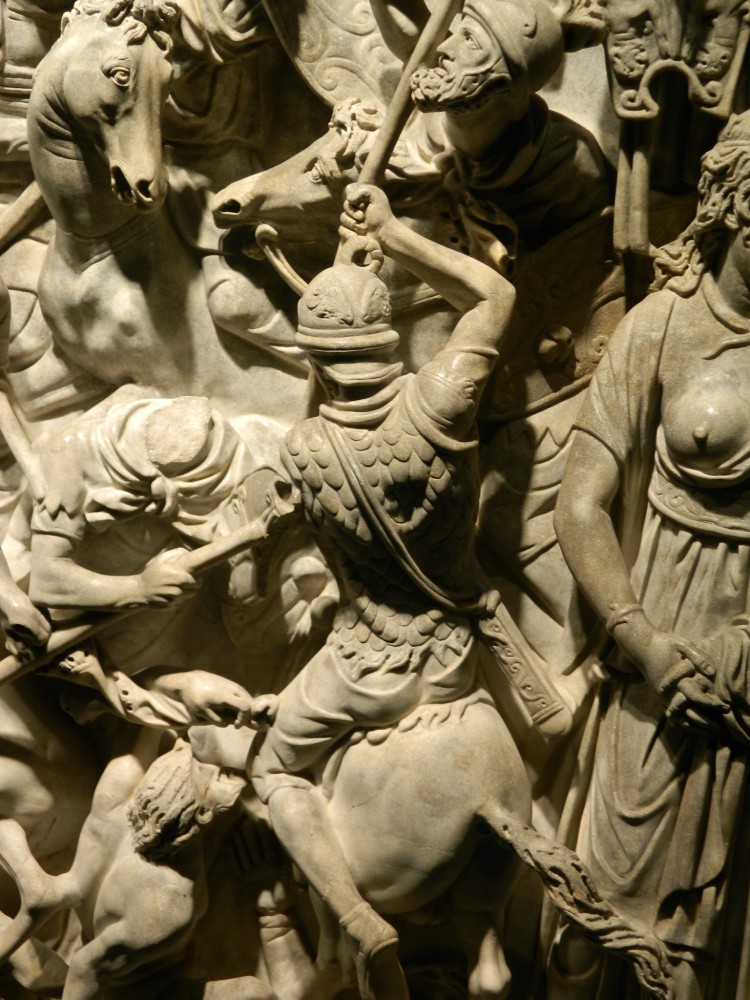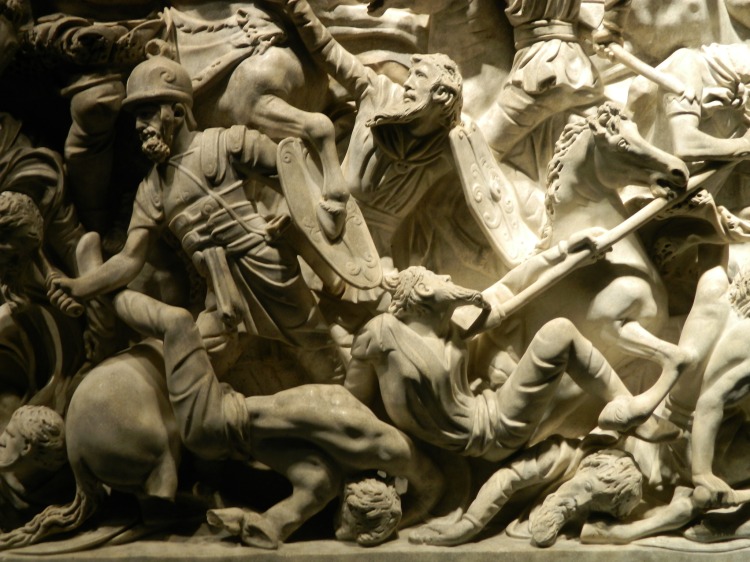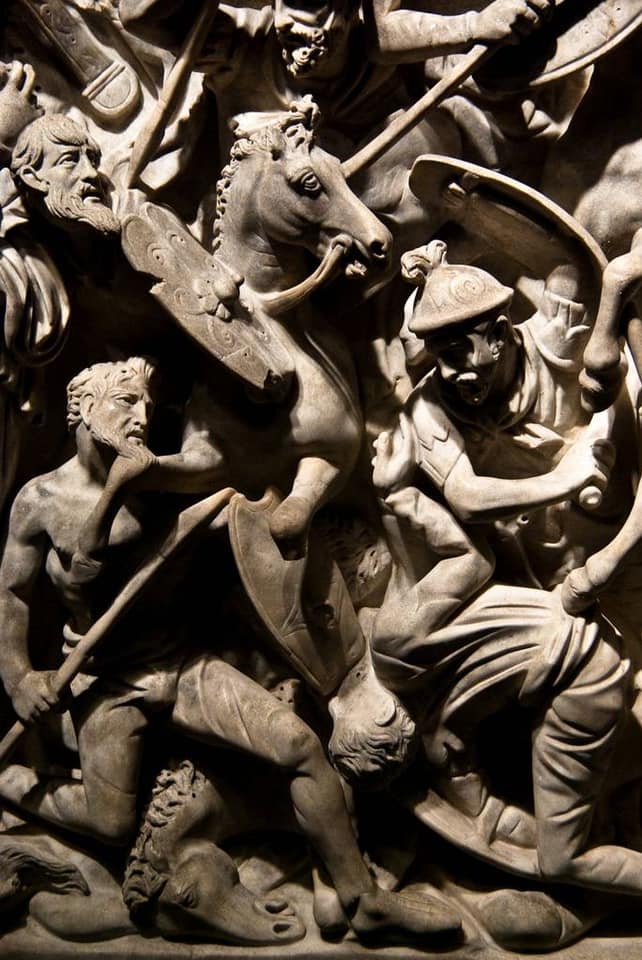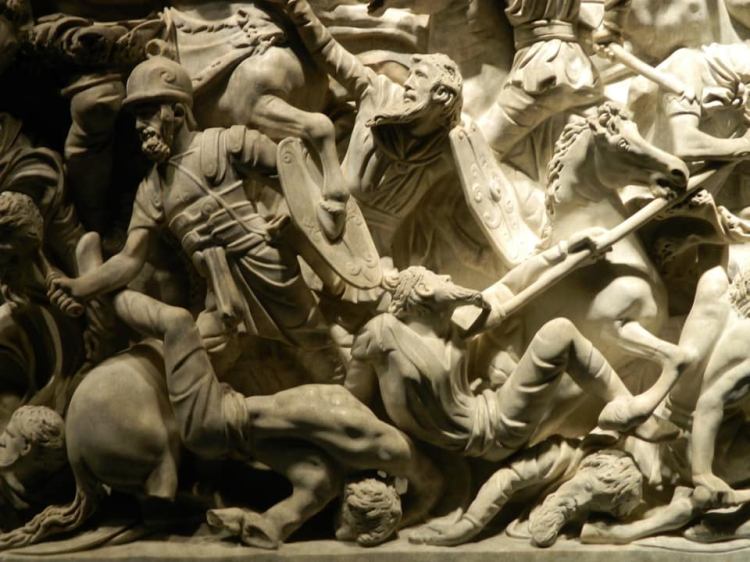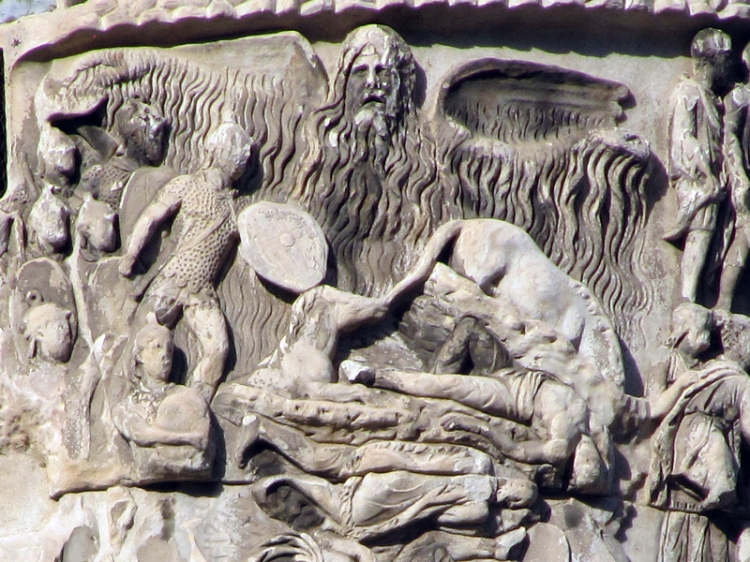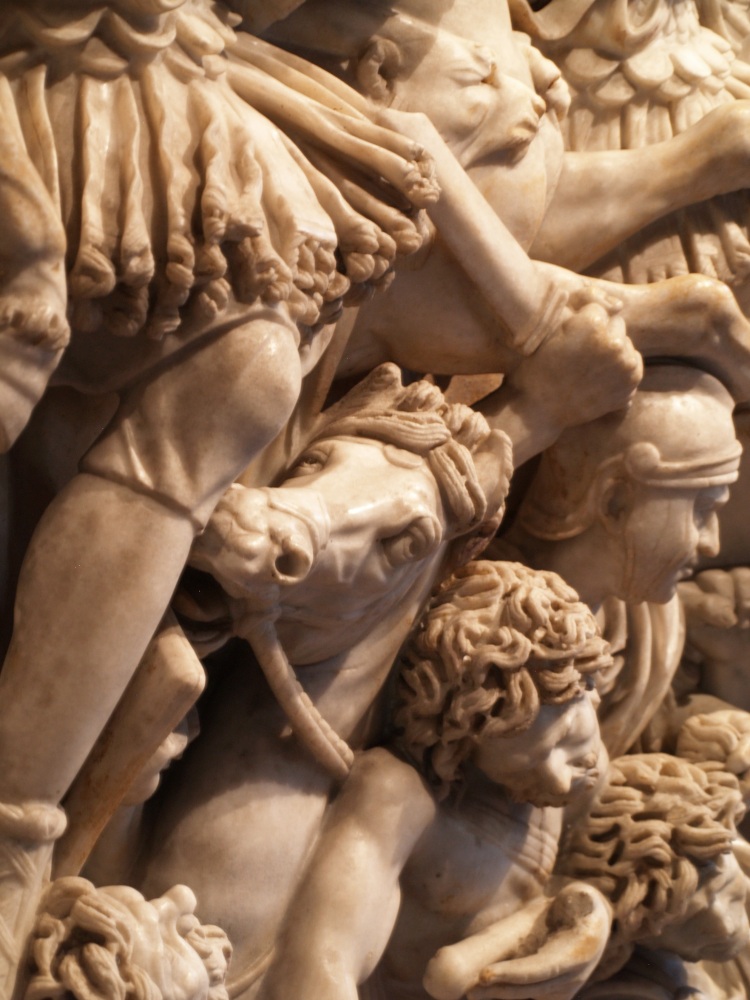Who is the faceless knight who rages in battle?
An entire room was dedicated to the Portonaccio sarcophagus at the National Roman Museum at the Palazzo Massimo headquarters.
It seems to be sucked into battle, thanks to the silence and the dim light of the room, in which the figures emerge from the darkness with strength and extraordinary plasticity.
A faceless knight dominates at the center of the scene, staring at the culminating moment of the assault. Below him the infantry fight hand to hand against the barbarians, who are horribly crushed to the bottom of the sarcophagus. The composition was conceived to give maximum prominence to the forces of Rome. The political message is: submission is the only chance the barbarians have in the clash with the empire.
The life of the client is described only on the band of the lid, while the main message is displayed on the front panel: the victory of Rome over the peoples – and therefore of the client – is inexorable.
On the band of the lid his life is described: birth, marriage in the center and leniency towards the barbarians at the end.
The face of the client and his wife are not also carved on the band of the lid.
In order for the portrait of the deceased to be as realistic as possible, it was customary to wait until the last moment to sculpt his face.
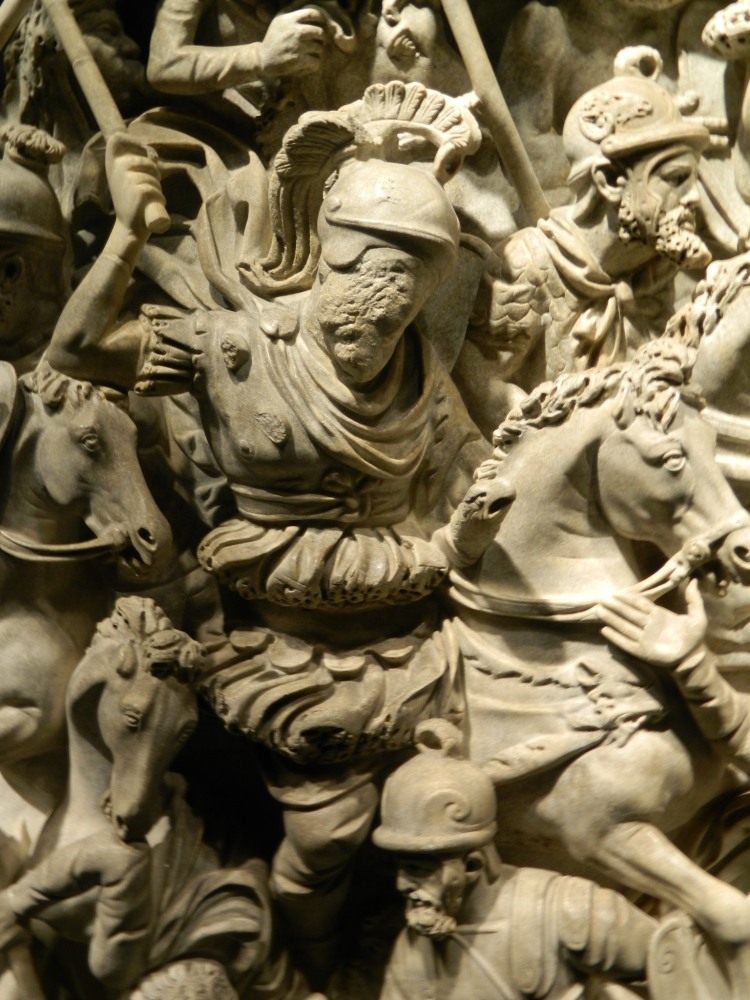
The Portonaccio Sarcophagus (II century AD) Rome, National Roman Museum, Palazzo Massimo.
The National Roman Museum of Palazzo Massimo has dedicated a room to the Portonaccio sarcophagus. The sarcophagus was found in 1931 near Portonaccio, a district of Rome.
Archaeologists believe they can identify the deceased with Aulus Iulius Pompilius, officer of Emperor Marcus Aurelius thanks to the military insignia represented on the upper edge of the sarcophagus – the eagle of the Legio 4 Flavia and the boar of the Legio Italica I
Aulus Iulius Pompilius fought in the wars against the Marcomanni from 172 to 175 AD.
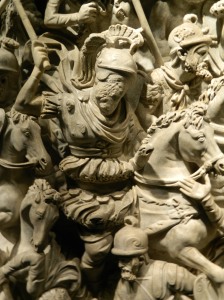

Thanks to some details It has been assumed that the sarcophagus was dedicated to Aulus Iulius Pompilius, even if the scene does not represent a particular war event.
The battle is represented in the style of the Antonine Column, where the Germanic wars waged by the emperor Marcus Aurelius are told.
The Legio I Italica (“of Italy”) was a Roman legion established by the emperor Nero on 20 or 22 September 66 AD. or 67 A.D. and active until the fifth century.
His emblems were the boar and the bull.
The legion fought on those borders in the wars of Domitian and, with Trajan, participated in the conquest of Dacia.
For Marco Aurelio the Legio Italica I defended the borders against Quadi and Marcomanni and with Septimius Severus he moved to the east to fight with the Parthians, also receiving the title of Severiana.
